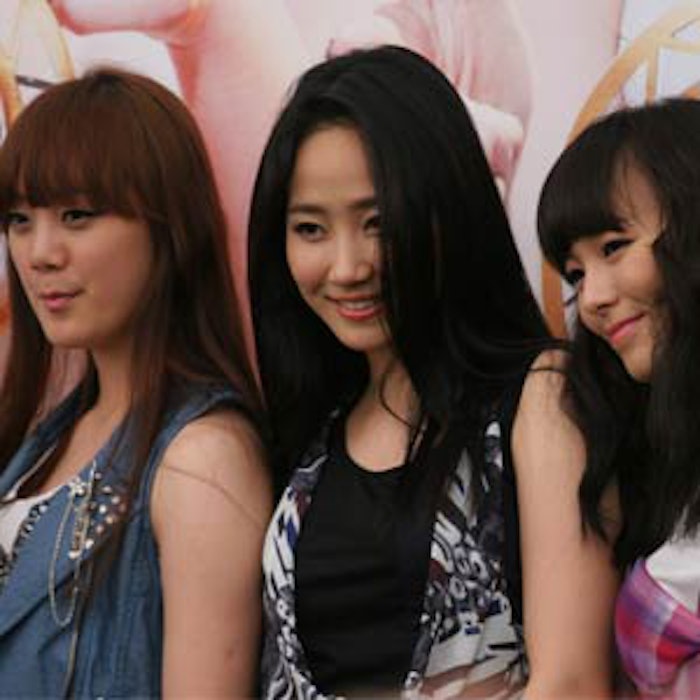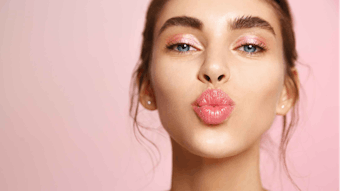
Korea—or, to be particular, “K-beauty”—is having a moment. According to a May 2015 story from The Washington Post, the South Korean beauty market is valued at about $10 billion dollars, more than 10% of which is derived from sales to men. In addition, brands, products, formats and other aspects of K-beauty are having a strong influence on regional markets (China), as well as U.S. beauty trends. Here, author Curt Altmann provides some first-hand insights into the country, the beauty market and its future. –Editor in Chief
Spend any sizable amount of time in South Korea and one thing becomes very apparent—Koreans have an astounding obsession with the look of their skin. Much has been already been written about how advanced and expansive the Korean market is in skincare products in comparison to the West.
Previously: Men's Skin Care Booming in South Korea
Even more significant, the Korean market now seems to be attracting global attention as a beacon of inspiration. From afar, this seems baffling at first—how can such a small market of only 50 million people, in a country the size Indiana, be such the wag of the global skincare dog? Further study can reveal some very interesting aspects that bode well, but also not so well, for the growth of the skincare market globally.
Further reading: South Korea Trending Up in Beauty
Voracious Consumers
First, let’s look at the Korean skincare consumer. She, and lately he, seems to be ravenous for product. It is already documented that the average Korean skincare consumer will use upwards of a dozen skincare products at a time in a daily regimen, with a nightly ritual that can last as long as 40 minutes. Why so many products? Unlike consumers in the West, Koreans don’t seem to have confidence in a single or set of miracle products. They will use many products to achieve desired results, believing each to have that incremental step to beautiful skin.
As such, there is very little brand loyalty. When a marketer expresses a new and different solution, consumers are eager to adopt it into their range of products. For them, it is easy to swap out products for a newer story or new user experience.
Importing Innovation
Korean celebrities are some of the greatest adopters of new product ideas the world has ever known, constantly scouring the globe for new ingredients, new stories and new rituals. Had it not been for Korean actresses championing the benefits of ingredient rich BB creams, this innovation would have continued to languish as a niche product as it had for decades since its inception by a German dermatologist in the 1960s. As it is, today’s cushion make-ups coming out of Korea are largely a new packaging and application spin for a traditional make-up serum formula.
Heavy Users
The level of Korean product usage is astounding. These consumers use six times the amount of skincare products per person compared to the next largest users in the world.
Korea’s skincare business is currently valued at $4.4 billion, with a population of only 50 million. Contrast this with the U.S. market, which is a $5-billion business with a population 300 million. In addition, only 15 million Korean men (according to United Nations figures) account for 21% of all men’s grooming sales worldwide. It would seem that this market is leading the way for the rest of the world to achieve the “holy grail” of men’s cosmetics.
High Churn
Korean consumers constantly pick up and discard products from their personal regimen. For marketers in the country, all of this heavy usage and lack of brand loyalty equates to very short product cycles. While western marketers aspire to five to 10 years as a successful product lifecycle, Korean marketers hope for only two to three years. This leads to wildly fast development times for new product launches, as marketers constantly seek new ways to segment the product offering to express newness.
Quick-to-Market
New product development in Korea averages seven months, compared to 12–18 months in the West. This is largely achieved by a different focus in product strategy. In the West, marketers ideally plan a calendar 18–24 months in advance before beginning formula development. Korean marketers, on the other hand, treat formula development independent of calendar and amass a library of ready-to-go products to plug-and-play with new packaging innovations.
At-home Shopping
Quick-to-market lends itself to the burgeoning home shopping business in Korea, which according to Euromonitor, reached 10.6 trillion won ($9.5 billion) in 2014. Home shopping thorough television and catalogs has been dominated by three major players in the last five years: CJ O Shopping, GS Shop and Hyundai Home Shopping, with many new players coming on. In addition, Korea’s small geographic size allows for same-day delivery as the norm.
By making transactions quick and simple, these companies have become enormously successful at getting consumers to buy, even through their mobile devices. In fact, gross sales in home shopping through mobile apps grew six-fold from 2011 to 2014 to include one third of all online purchases.
Elaborate Rituals
One of the drivers of the country’s beauty market growth is the now-famous Korean 10-step skincare routine, which starts with makeup removal and courses through multiple methods of the same three-step cleansing, exfoliating and moisturizing ritual used in the West.
However, what western consumers consider as an expedient routine, the Koreans consider an important ritual. Korean women will use multiple products in each step, incorporating essences and serums and a mask, culminating with a series of moisturizers, most containing SPF. A real breakthrough is that many Korean men are now embracing the same skin fascination, making the Korean men’s cosmetic market the largest in the world.
Cultural Drivers
In reality, Korean skincare problems are not so unique compared to the rest of the world, so why the obsession? To offer an explanation, it’s important to note that the focus on their skin is affected by two powerful things—one bound within Koreans’ ancient culture, and the other a result of latent socioeconomic changes.
Korean culture is deeply rooted in Confucianism, which was revived there during the Joseon dynasty in the late 14th century. Since that time, Confucianism has had a significant influence on women’s sense of beauty. How you present yourself to the rest of society is crucial, as a clean and soft face is considered a reflection of inner beauty. This mirrors both of the Confucian concepts of physiognomy: that one’s facial appearance is a determinant of one’s character or personality, and that one’s behavior toward others is far more important than what they think about themselves. In short, they are duty-bound by society to look as beautiful as possible.
Korea’s economy evolved from industrialism to consumerism only within the last 35 years. That means that today’s middle class workers and professionals are, by and large, the offspring of factory workers, who themselves were the offspring of farmers. With today’s consumers just two generations removed from a rural agriculture culture, tanned skin is associated not with leisure and affluence, as it is in the West, but rather with being a laborer. Avoidance of the sun by Koreans, especially women, is legendary.
Female caddies at the country’s many exclusive golf and country clubs dress as though it were winter, regardless of season, with extra-long-brimmed hats that do not allow a single ray of sunshine to graze their skin. Korean beach resorts that look all but abandoned during the day become a riot of activity as soon as the sun goes down. As such, sunscreen is not treated as a special segment in skincare and personal care but rather as a basic point-of-entry ingredient.
All of this is very reminiscent of the industrialization of the West at the turn of the 20th century, and one can’t help feeling that history is repeating itself. Amidst the great western migration from the agrarian to the urban during the industrial revolution, the Victorian concept of femininity idealized light porcelain skin. This concept of femininity stressed a total avoidance of the sun with its attendant connotations of fieldwork. In today’s Korea, we could be looking at a 21st century reincarnation of the Gibson Girl.
K-beauty goes Global, but Not Universal
Having some of the highest per-capita use if skincare products in the world, it’s no wonder global marketers are looking to Korea for trends, but what many are now finding is that there is quite a lot that can be lost in translation.
One of the big realizations is that Korea is a mono-ethnic culture. That means that the variety of skin issues is both narrow in scope and universal. Skincare concerns in the West tend to be more varied, due to the culture’s worship of the sun, which can lead to wrinkles, discolorations and skin texture issues. Conversely, a great deal of focus in Korean skincare products is on the preservation of young skin, skin that has never had a suntan.
Korean consumers are also very liberal with skin-whitening ingredients, such as hydroquinone and kojic acid, which have either been banned or rendered strictly OTC in the West. As a result, many Korean product offerings are a one-solution-fits-all and may not address the varied needs of the multiple skin types and complexions in the West.
So, while Korea may not be such a great indicator of global trends, many marketers now feel that it can be an excellent road map for emerging Asian markets. The wants and needs of today’s Korean consumer can serve as a future indicator for economies that are only about a generation (or less) behind in their march through industrialization toward a middle class service economy, including China, Malaysia, Indonesia and Vietnam.
In conclusion, the Korean skincare market has a lot to offer on how to create and expedite new and innovative experiences for formulas, packaging and distribution, but it is not necessarily the universal guide for western consumers.
Curt Altmann, Marketing Director for Yonwoo/PKG, worked and resided in South Korea in 2012–2013. He has held previous positions in creative, marketing, new brand development and consulting at Max Factor, Revlon, Benetton, The Body Shop and Coty.










